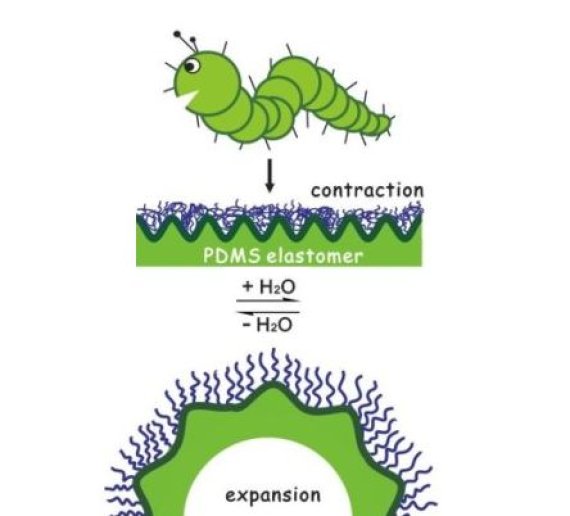But nothing moves of its own accord. And that goes for this piece of rubber too, explains Van der Gucht. The rubber reacts to continuous changes in atmospheric humidity. The secret lies in a charged polymer layer on the rubber which swells considerably when it absorbs water. ‘More or less the way a diaper does,’ offers Van de Gucht by way of comparison. As the moisture evaporates, the material returns to its original shape.
Materials with a memory are not new. But the process is usually time-consuming. The double layer that has now been developed does not suffer that handicap, however. The material responds instantly, which makes applications a much more attractive prospect. In a humidity sensor, for example, suggests Van der Gucht. ‘Like the way stomata in a lead open and close. But you can use other stimuli than water too. The layer of polymer is electrically charged. In principle it can react to salt, the pH or even to electric fields.’
The variety of possible movements depends on the pattern of the polymer applied. This practical side of the work was done by the Chinese. Van der Gucht’s contribution was the development of the theory. Van der Gucht created a model that explains why and how the material reacts so fast. ‘That abrupt transition is easily explained,’ he says. ‘In processes in which different forces act in opposition to each other you often see a threshold value, a tipping point. That is what is happening here too.’
Video van Professor Feng Zhou van de Chinese Academy of Sciences

